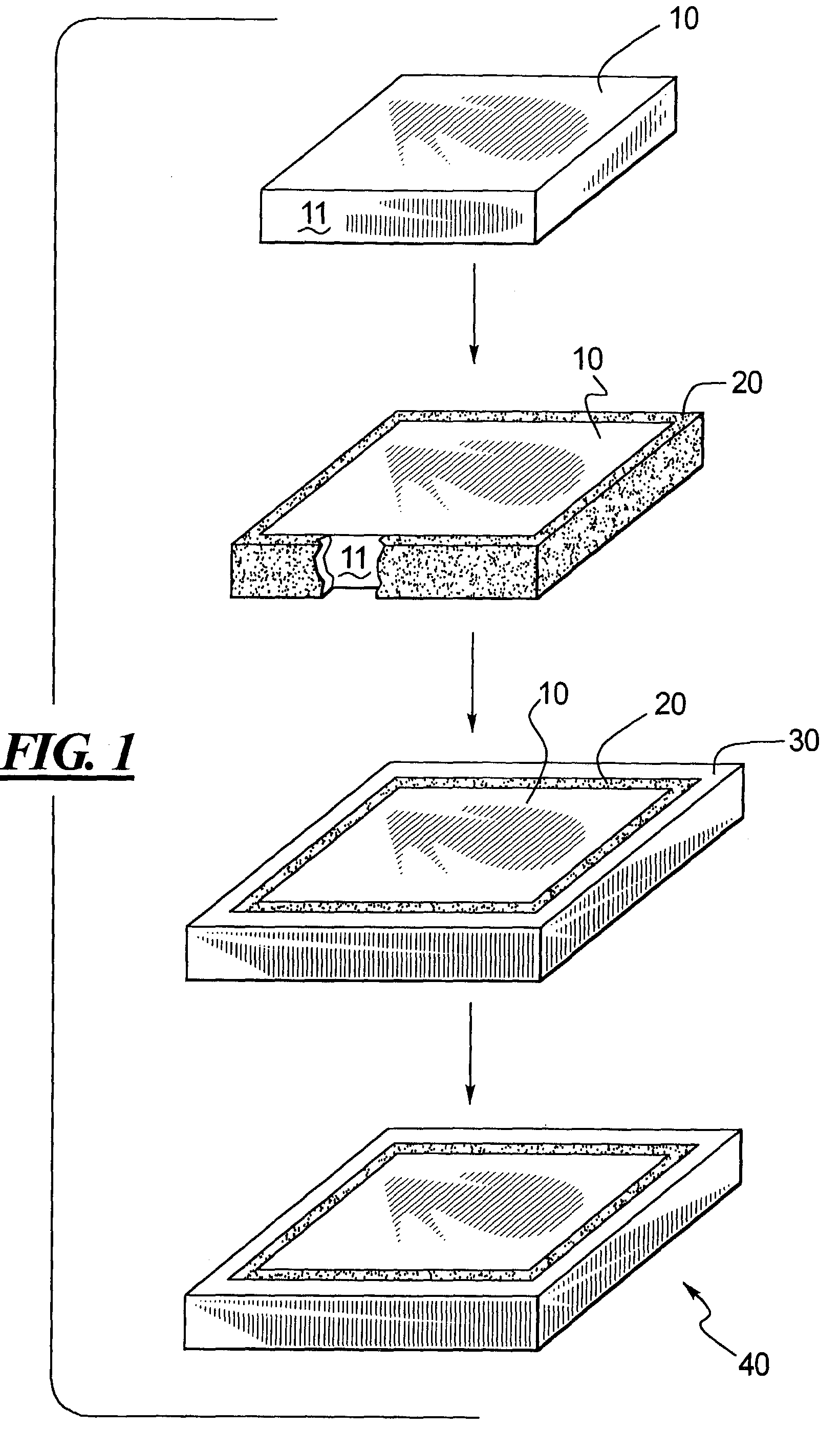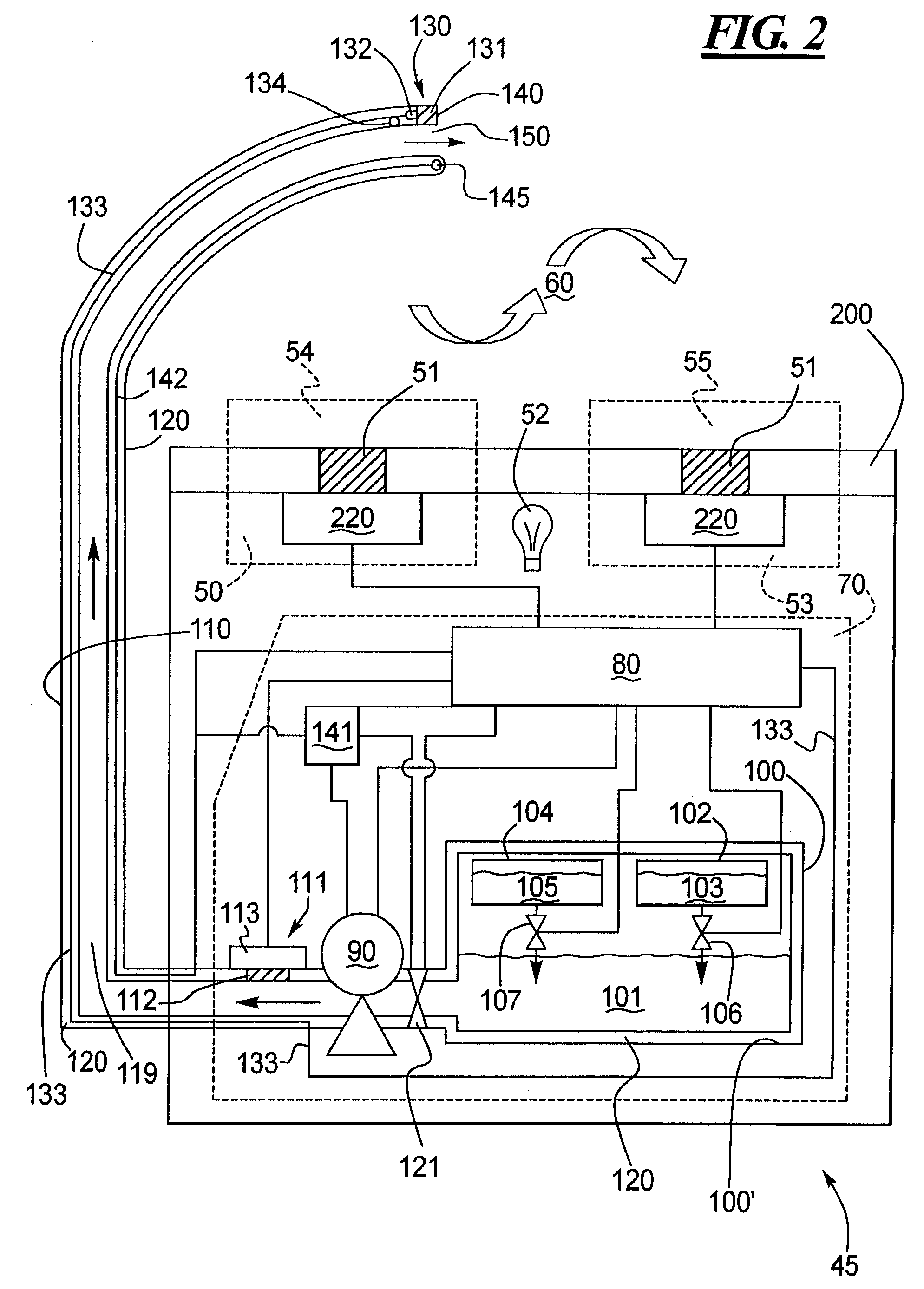Method of manufacture of smart microfluidic medical device with universal coating
a microfluidic and medical device technology, applied in the field of smart medical devices, can solve the problems of conventional devices, conventional devices cannot optically measure the concentration of drugs being delivered, and conventional devices cannot optically measure or monitor, so as to achieve effective treatment of patients, control blood flow and cardiac function, and simple fabrication procedures
- Summary
- Abstract
- Description
- Claims
- Application Information
AI Technical Summary
Benefits of technology
Problems solved by technology
Method used
Image
Examples
Embodiment Construction
[0039]FIG. 1 illustrates a preferred embodiment of the present invention, wherein a core 10, is formed, and then coated with a diamond or diamond-like coating 20, and then a structural support material 30 is applied to coating 20, and then the core 10 is removed, resulting in a medical device component 40, comprising structural support material 30 having a coating 20. As shown in FIG. 1, core 10 is a rectangular shaped member having a substrate surface 11. Preferably, core 10 is prepared for coating application. Methods for preparing core 10 for coating application include, but are not limited to, chemical and or mechanical polishing chemical etching, ion etching, ion milling, including the deposition of adhesion promoters, sacrificial films and / or stress relieving films. The resulting surface finish is substrate surface 11. It may be preferable to select materials so that the bond between the diamond or diamond-like coating 20 to the structural support material 30 is greater than t...
PUM
| Property | Measurement | Unit |
|---|---|---|
| melting point | aaaaa | aaaaa |
| pressure | aaaaa | aaaaa |
| structure | aaaaa | aaaaa |
Abstract
Description
Claims
Application Information
 Login to View More
Login to View More - R&D
- Intellectual Property
- Life Sciences
- Materials
- Tech Scout
- Unparalleled Data Quality
- Higher Quality Content
- 60% Fewer Hallucinations
Browse by: Latest US Patents, China's latest patents, Technical Efficacy Thesaurus, Application Domain, Technology Topic, Popular Technical Reports.
© 2025 PatSnap. All rights reserved.Legal|Privacy policy|Modern Slavery Act Transparency Statement|Sitemap|About US| Contact US: help@patsnap.com



